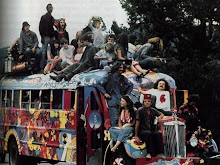In part one of the lab we tested to see which solvent between H2O, CH3OH, C3H7OH, and C6H14 works best in the separation of the mixture found in black ink.
We are comparing different solvents' polarity and ability to separate a mixture into its pure components.
Introduction Part II:
In part two of our experiment we chose a solvent, in part one, in our case, we picked H2O and tested its ability to separate different colors. We compared a single solvent versus different ink types. In part two of this lab we needed to classify a pure substance from a mixture.
Hypothesis Part I:
We predicted that H2O would be the best solvent, because it is the simplest solution and it has the least quantity of hydrogen of all the elements. Unlike the other elements that have increasing number of hydrogen atoms H2O only has two.
Hypothesis Part II:
We predicted the colors red, orange, and green were mixtures. While the ink color yellow would be a pure substance.
Lab Safety:
Lab safety is always an important topic during an experiment. Since the procedure of our lab used chemicals, we need to be aware of every precaution needed to be taken. We used a fume hood, aprons, and safety goggles during the experimental parts of the chromatography lab.
Part I Experiment:
In the lab we used four solvents including: H2O, CH3OH, C3H7OH, and C6H14.One black overhead pen was used, four strips of filter paper approximately one centimeter by eight centimeters, a pencil, and a well plate. We wore our safety equipment and had the fume hood on while experimenting also.
We started the experiment by picking one black overhead pen. Next we cut four strips of filter paper. Then we made a right angle bend at one end of the strips approximately one inch from the one end of the strip. Next we put a pencil line near the crease and dotted the ink to be tested several times on the pencil line. We also labeled each strip of filter paper with the solvent being used. Then we filled the four wells on the well plate with the different solvents approximately half full. Next we placed our paper strips into the wells so that the short end was in the solvent. Finally we allowed the solvent to travel up the paper to the ink dots and recorded our observations.
Part II Experiment:
In the lab we used the solvent chosen, which was H2O. We also picked four different colors of over head pens. We used four strips of filter paper approximately one centimeter by eight centimeters, a pencil, and a well plate. We wore our safety equipment and had the fume hood on while experimenting also.
We started with filling four different holes in the well plate with the H2O solvent. Then we took four strips of filter paper and folded one end of it one inch from the end. We took a pencil and marked where we needed to put the different colored dots from the overhead pens. We made our dots and then placed the folded edge into the H2O. We took our date as we observed what occurred during a twenty minute period.

Part I Conclusion:
As we said in our above prediction, H2O was the best solvent used to separate the different colors that made up the single color, black. Relying on the data we found out in the experiment was H2O was the best solvent, next was CH3OH, then C3H7OH, and finally C6H14. we found that the black pen was a mixture because of the different colors that were revealed during the procedure. A black overhead pen was not pure. We would say that in real life situations we are thankful that we have the ability to find out what makes up different things in the world and how colors are all different in every way. there are many different colors that make up the world inside and out and combined with one another makes other pigments which we are able to discover and realize.
Part II Conclusion:
As we predicted in our above part two hypothesis, yellow was a pure substance. We learned that another pure substance is red. The green and orange color were mixtures as we predicted above. The solvent we chose for part to was the best choice also. Using H2O helped the procedure come out clean and more efficient. Using any other solvent would of either taken longer or would not of produce reliable results than what we got by using the H2O.



way to get charging on the next lab report:] You need to get your journal scanned in for the chromatography lab and clear up some of the formatting issues/typos etc. Nice job though!
ReplyDeleteGood conclusion and introduction.
ReplyDeletenice job.. there are a few grammatical errors but overall you did great
ReplyDeleteNeeds more pictures
ReplyDeleteya it looks awesome
ReplyDeleteEverything looks great but be sure to put your info in sequence it works this way but i think it would be much better to insert the #2's were they belong. Layout your blog in the same order you completed your experiment in.
ReplyDeleteGood job... add some more pictures of your journals beat neat-o job.
ReplyDeletesome scans of your notebook would make this worth archiving and using as a sample in later years
ReplyDelete